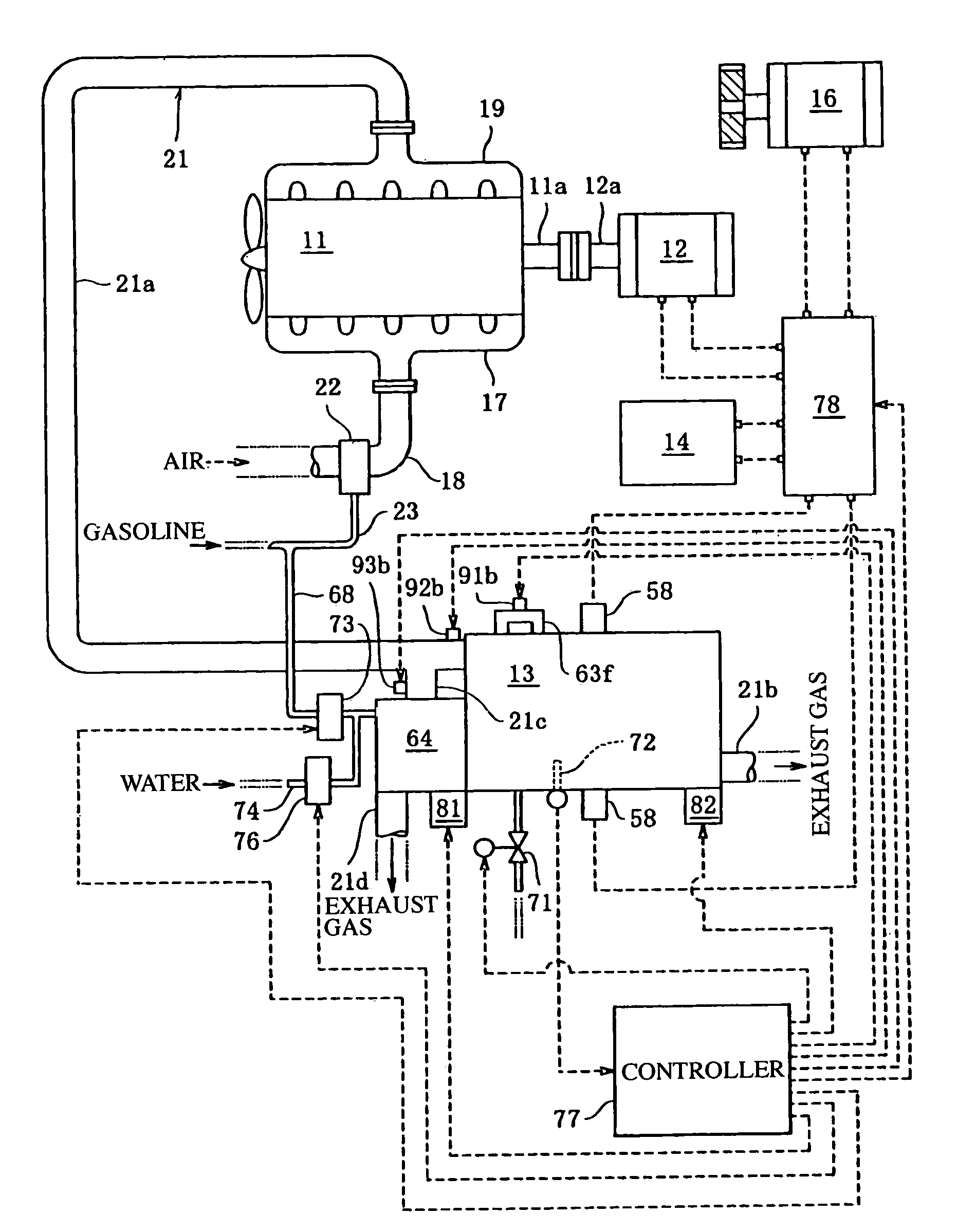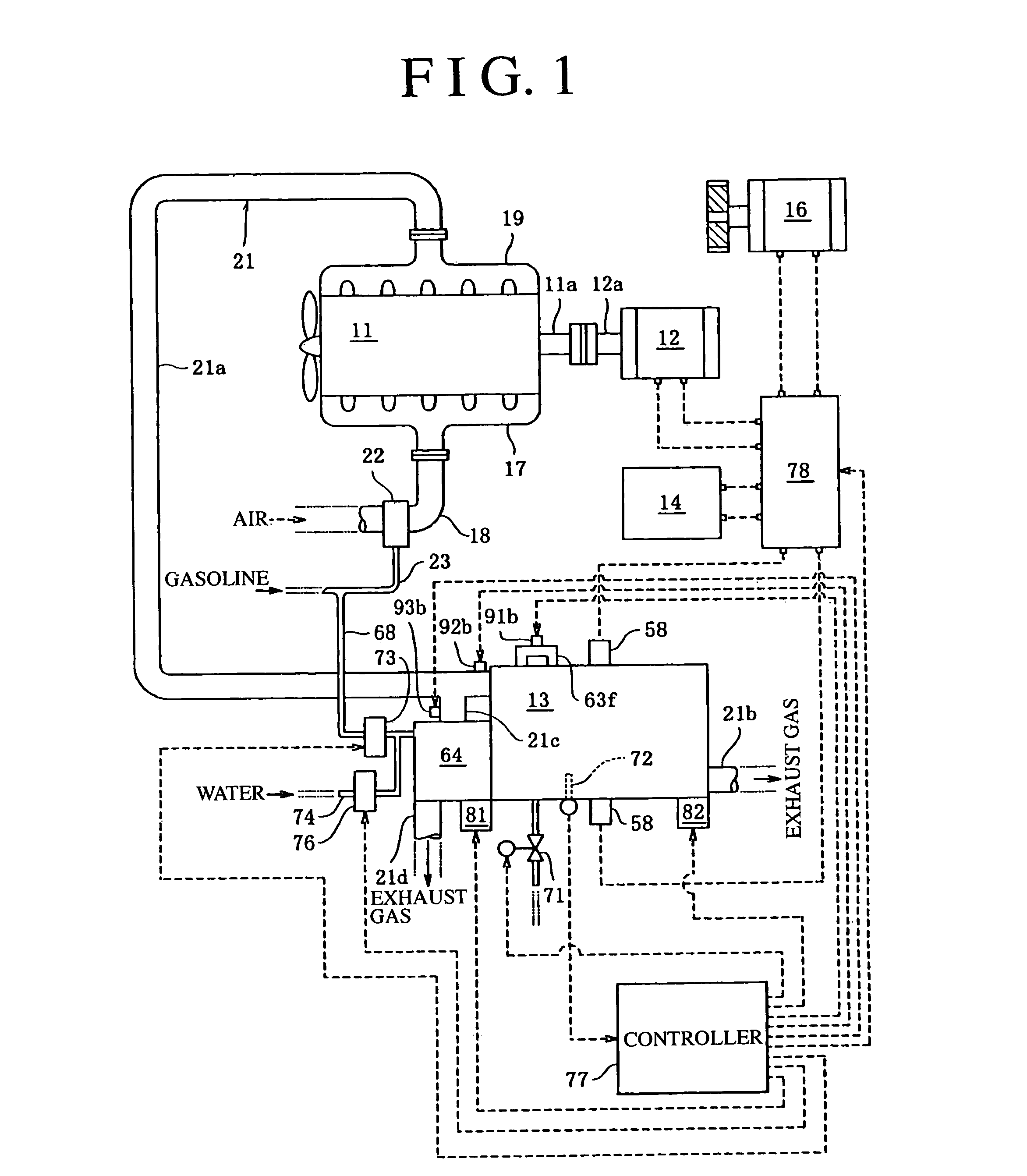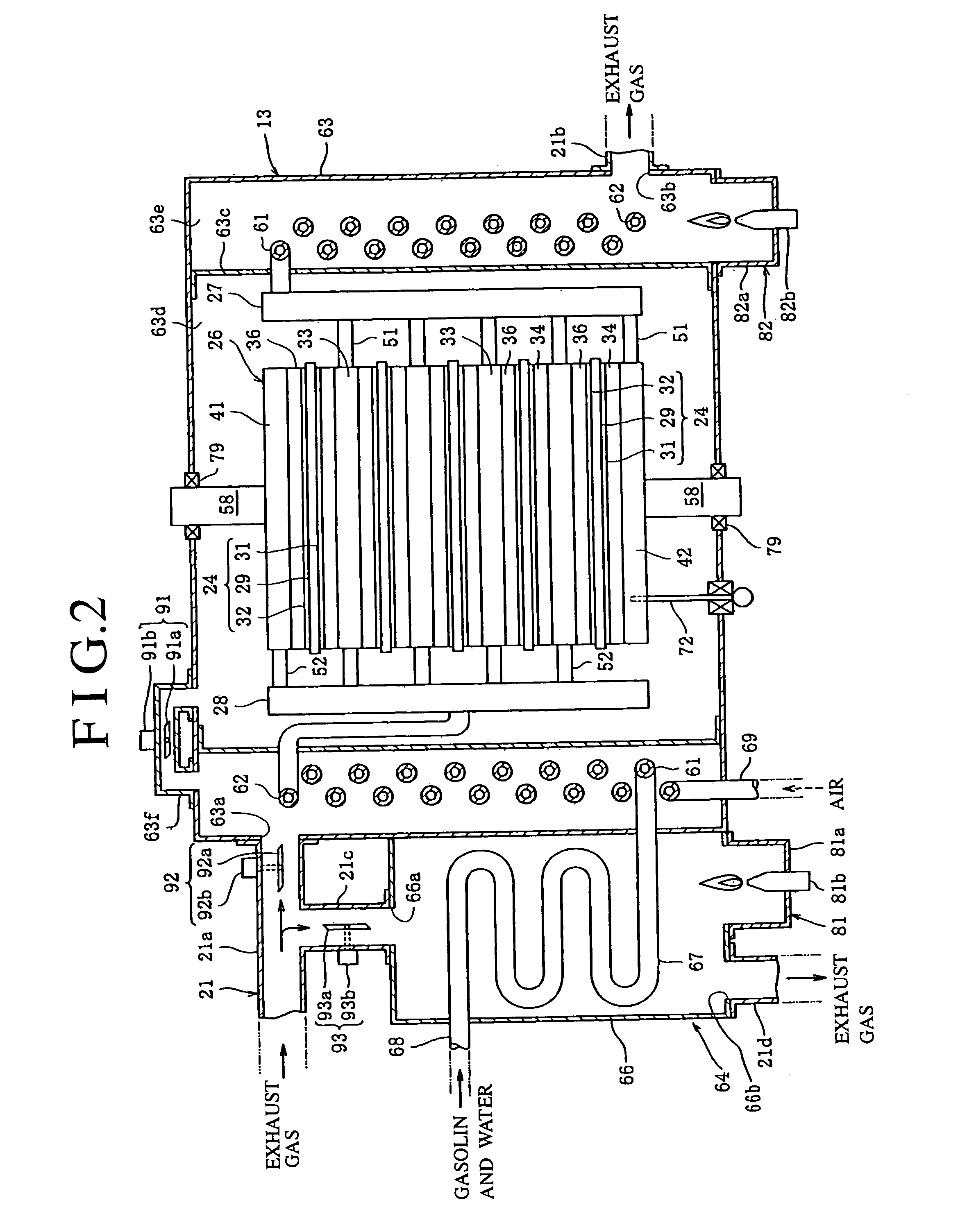Hybrid power system including an engine and a fuel cell module
a power system and fuel cell technology, applied in the direction of gaseous engine fuel, plural diverse prime-mover propulsion mounting, gas pressure propulsion mounting, etc., can solve the problems of reducing the power generation efficiency of the fuel cell, unable to carry out refueling in a normal gasoline station, and unable to meet the needs of refueling, etc., to achieve efficient electric power generation and quick vaporization
- Summary
- Abstract
- Description
- Claims
- Application Information
AI Technical Summary
Benefits of technology
Problems solved by technology
Method used
Image
Examples
Embodiment Construction
[0035]Next, an embodiment of the invention will be described with reference to the drawings.
[0036]As shown in FIG. 1, a hybrid power system of the invention is mounted in an automobile. This hybrid power system includes an engine 11 using gasoline as fuel, a generator 12 an input shaft 12a which is coupled with a crank shaft 11a of the engine 11, a fuel cell module 13 which can generate electric power at 930° C. or lower, a secondary battery 14, and an electric motor 16. An intake pipe 18 is connected to an intake port of the engine 11 through an intake manifold 17, and an upstream side exhaust pipe 21a of an exhaust pipe 21 is connected to an exhaust port of the engine 11 through an exhaust manifold 19. A carburetor 22 for vaporizing gasoline to supply it to the intake pipe 18 is provided midway in the intake pipe 18, and a tip end of a refueling pipe 23, a base end of which is connected to a fuel tank (gasoline is stored), is connected to the carburetor 22. Gasoline vaporized by t...
PUM
| Property | Measurement | Unit |
|---|---|---|
| temperature | aaaaa | aaaaa |
| temperature | aaaaa | aaaaa |
| mechanical power | aaaaa | aaaaa |
Abstract
Description
Claims
Application Information
 Login to View More
Login to View More - R&D
- Intellectual Property
- Life Sciences
- Materials
- Tech Scout
- Unparalleled Data Quality
- Higher Quality Content
- 60% Fewer Hallucinations
Browse by: Latest US Patents, China's latest patents, Technical Efficacy Thesaurus, Application Domain, Technology Topic, Popular Technical Reports.
© 2025 PatSnap. All rights reserved.Legal|Privacy policy|Modern Slavery Act Transparency Statement|Sitemap|About US| Contact US: help@patsnap.com



